
Dec 4, 2024
Four insights into how outages, poor connectivity, sluggish network speeds, and other issues can significantly impact operations and user satisfaction.
Enterprise CXOs increasingly regard the internet as the backbone of the corporate network. Decentralized, pluralistic, and built on open standards, the internet is a reliable means for delivering a great experience for most business applications. But this global tapestry of networks and nodes does not always ensure speedy, flawless access.
As businesses rely heavily on digital platforms and cloud-based services, the robustness of IT infrastructure directly correlates with productivity, customer satisfaction, and overall competitiveness. Suboptimal digital experiences and the potential for widespread cloud outages can cause lengthy downtime with far-reaching impacts.
This report shares four insights into how outages, poor connectivity, sluggish network speeds, and other issues can significantly impact operations and user satisfaction, and how Zscaler Copilot for digital experiences can help IT teams find and fix issues proactively, before performance problems even come to the end users’ attention.
Insight #1: Fastest does not always mean the best
Last year, the world produced more data than ever before, and the rate of data creation continues to accelerate. A forecast for global internet traffic growth estimates 20–25% CAGR for the foreseeable future, with most of it, 59%, coming from mobile devices.
Investment and policy decisions keep improving broadband speeds. The average global fixed broadband speed was 94 Mbps in September 2024, according to the Speedtest Global Index. However, high speed does not always translate into a great digital experience. The Zscaler Digital Experience (ZDX) Score measures the digital experience of all users in an organization across all applications, locations, and cities. It rates user experience when accessing applications and includes metrics such as page fetch time, server response time, and availability. This score also rolls up to the country level.
For the top 25 countries ranked by ZDX Score, there is little positive correlation with speed – fixed or mobile. Bulgaria and Luxembourg (see figure 1) shared the top spot for ZDX Scores in September, but are far from leaders when it comes to internet speed. This can be for any number of reasons, such as the location of data centers, the number of packet hops, and the paths they take to reach destinations – like the Zscaler cloud – and other technical issues. Internet freedom and net neutrality policies could also play a role in traffic behavior. ZDX allows for a measurement of the totality of user experience.
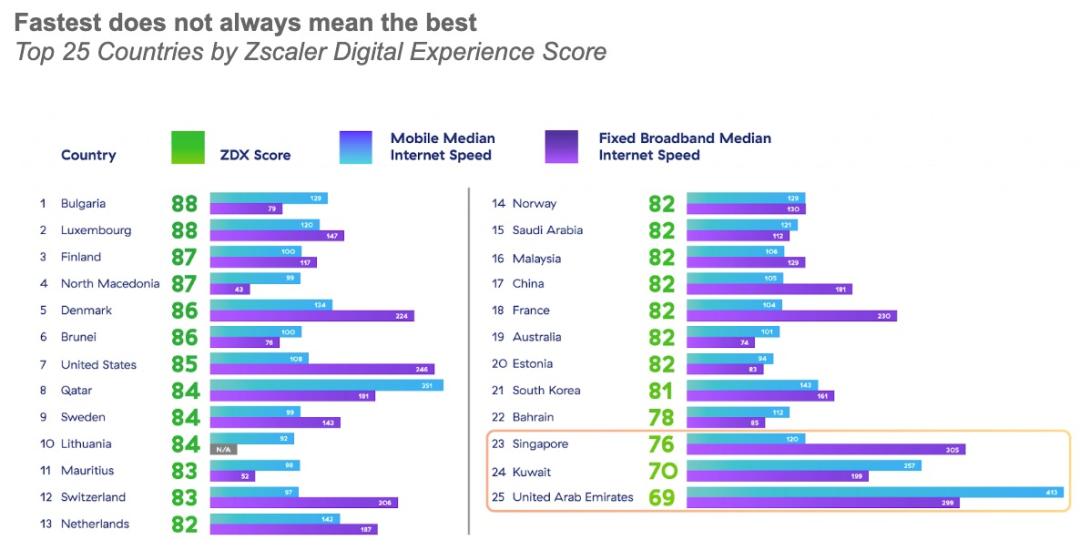
Insight #2: Wi-Fi disruptions impact experience
Aggregate incident data extracted from ZDX earlier this year shows office Wi-Fi is the issue that most frequently impacts end-user digital experiences. We found far more Wi-Fi incidents than other types of monitored incidents, like those affecting SaaS and unified communications, combined. These disruptions lasted between a few minutes and several days, but regardless of the length of time, they caused annoyance for the users relying on that connectivity for their work. Such disruptions can undermine return-to-office initiatives.
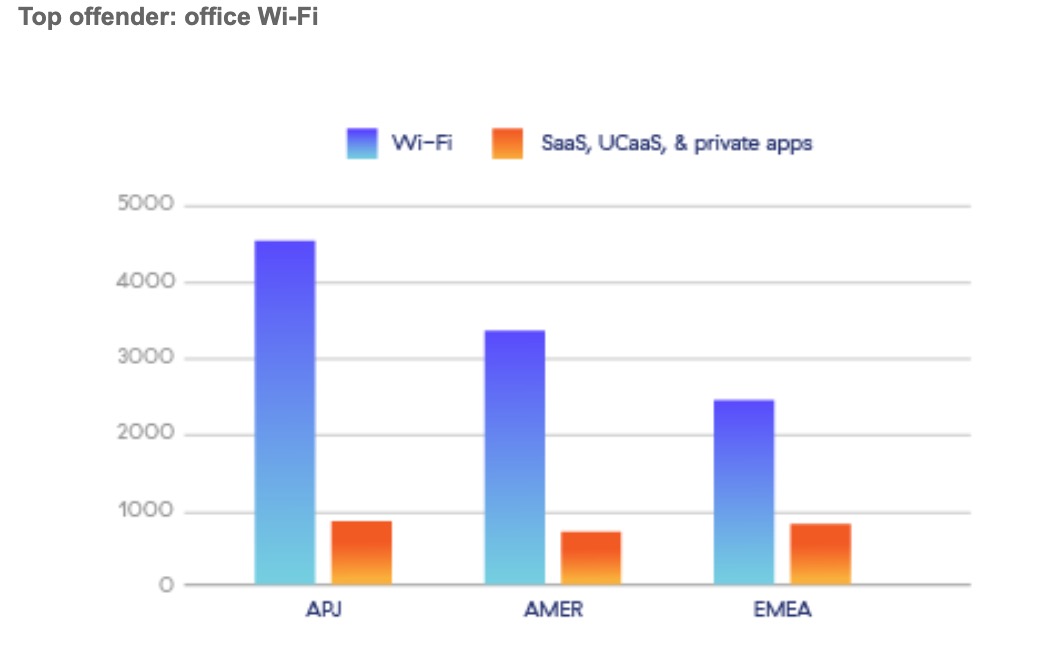
Zscaler data showed the highest incident count in Asia, followed by the Americas and EMEA. Among the roughly 10,000 Wi-Fi incidents detected across nearly a thousand organizations between March 1 and April 5, 2024, 40% of the access points were involved in more than one incident, and 10% were involved in ten or more incidents.
Zscaler Digital Experience registers incidents as a drop in user experience after first correlating the cause to network performance or application degradation. To qualify as a Wi-Fi incident, ten or more devices in a trusted location (e.g., office, data center, etc.) connecting to corporate Wi-Fi experiencing degraded service due to a combination of decreased signal strength, increased latency (delay in a data packet’s arrival to a destination), packet loss (when data packets fail to arrive at their destination), and gateway jitter (delay variation between received data packets).
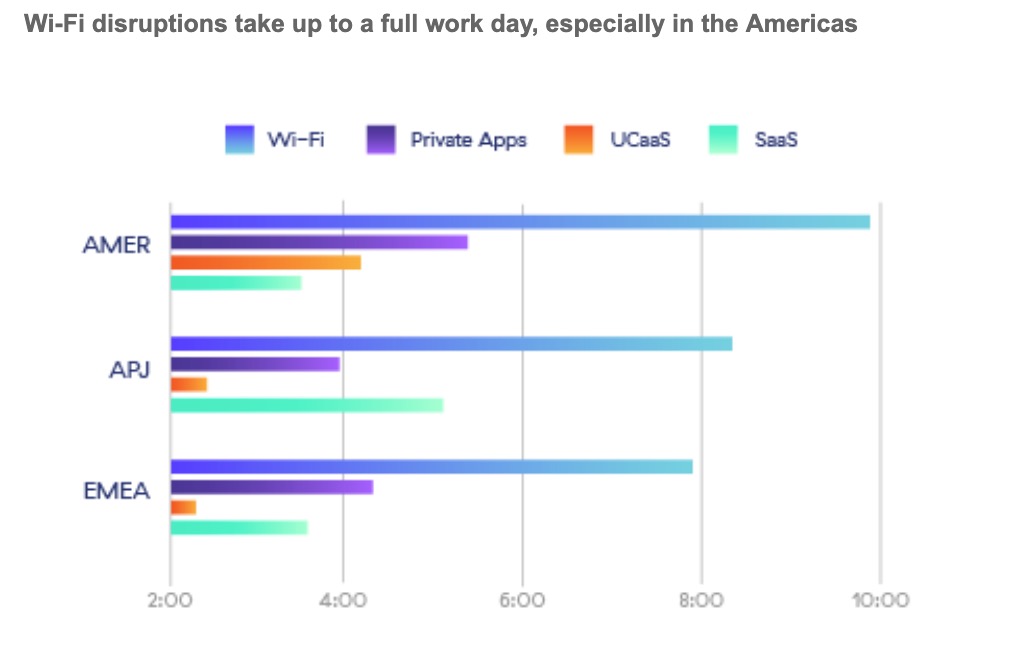
Office wireless infrastructure must be well maintained to prevent a variety of problems that can impact user experience. Remediation can be simple though, and can significantly improve user experience. Networking and IT managers should confirm wireless access points are compatible with the devices connecting to them and update all devices with the latest firmware and drivers. Router and access point settings can be optimized, including channel width, channel selection, transmit power, and quality of service (QoS). Using a digital experience monitoring tool like ZDX can drastically improve the IT staff’s ability to pinpoint problems.
Insight #3: Experience management can help cost control
The quality of digital experience and ensuring consistent performance and visibility of the workforce is top of mind for CIOs. That includes being able to see how teams and individuals use their apps and data when at the office as compared to when remote. This insight can help with resource allocation and office work experience optimization; poor digital experience for end users, especially those working from office locations, presents potential costs for both profits and productivity.
First-party data insights from digital experience management solutions can help reduce risk and costs through improved employee productivity, while lessening cyber risk and optimizing SaaS spend and office utilization. By identifying wasteful technology spend and refining IT infrastructure based on location usage statistics, leaders can finally pinpoint what is needed, where it is needed, for every branch, floor, or other location.
Such intelligence can also be applied down to the device level that, in aggregate, yields powerful insights into the utilization and relationship of your IT infrastructure and assets and the workforce that uses them. By fully understanding an organization’s software and hardware portfolio and versions deployed on each device, informed decisions can be made with the greatest possible precision.
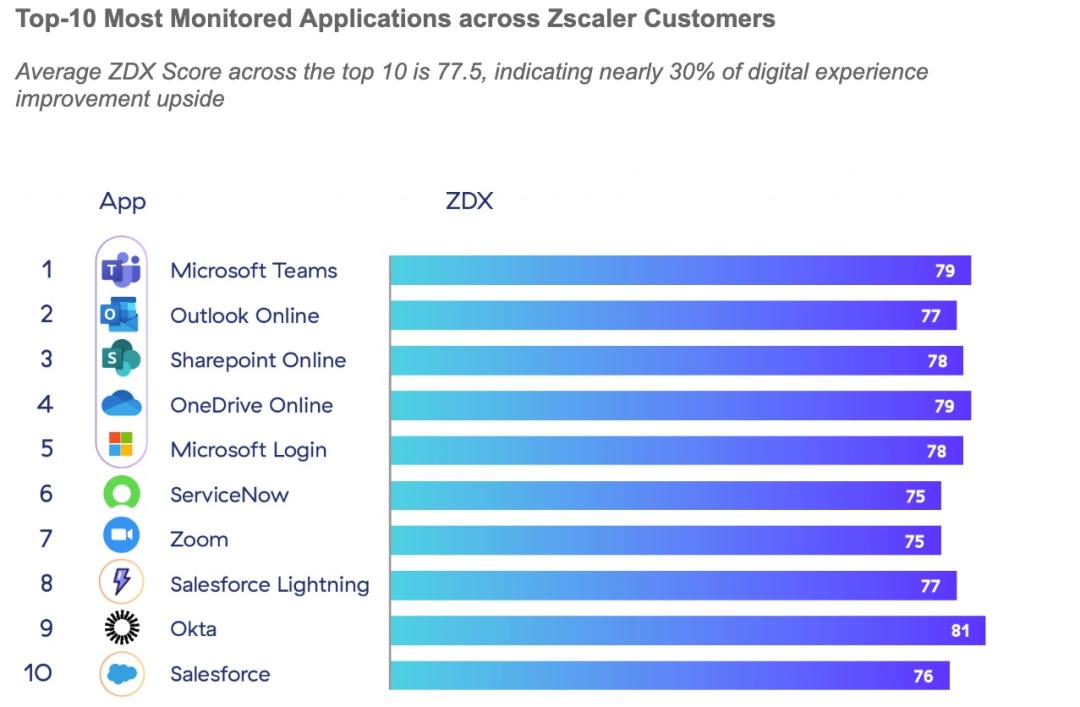
Insight #4: AI can diagnose and fix performance issues
How businesses operate and workers get their jobs done is undergoing a seismic change. New AI-powered applications are spawning new efficiencies, analytics capabilities, and smarter workflows. Organizations that rely heavily on AI apps generate more traffic between workloads, increasing the demands on their network infrastructures. By 2025, more than half of network application traffic will involve AI content generation, curation, or processing, and it’s expected to increase to 75% by 2030. Networks will need to adapt to allow for expanded bandwidth, larger inputs into AI models, and more edge processing.
Fortunately, network and service desk teams can harness AI to keep pace with exponentially growing digital complexity. In fact, the AI revolution will remove humans out of the path of many workflows and tasks—in this case, diagnosing root causes for performance problems, which are better suited for the world of algorithms and gigantic data sets.
This reality is already here with Zscaler Copilot for digital experiences. IT teams can get what they need using a simple sequence of questions (like ChatGPT) to quickly spot and remediate problems to ensure your services are delivering top performance at all times. Teams are able to find and fix issues proactively, before performance problems even come to the end user’s attention. Service desk teams can triage tickets more quickly and escalate them to the right teams faster, accelerating resolution times.
Powered by a custom-built large language model (LLM), its versatility reframes the entire experience of this category of tools:
- Service desk analysts or new hires can quickly upskill themselves by asking domain-specific questions, or by extracting knowledge from documentation using simple questions.
- More tenured analysts can ask deeper questions. For example, if several employees in Paris complained about their email client in a certain timeframe, analysts can simply ask: “Why was Outlook slow for users in Paris at 9 a.m. today?” to reveal root causes and the underlying performance trends.
- Copilot also automates configuration tasks – for example, if complaints about Outlook from users in Paris are relatively frequent, you can ask Copilot to trigger an alert anytime more than 25% of users from Paris start to experience poor Outlook performance.
- IT employees across functions can upskill themselves, automate tasks, draw digital experience insights, and perform deep analysis.
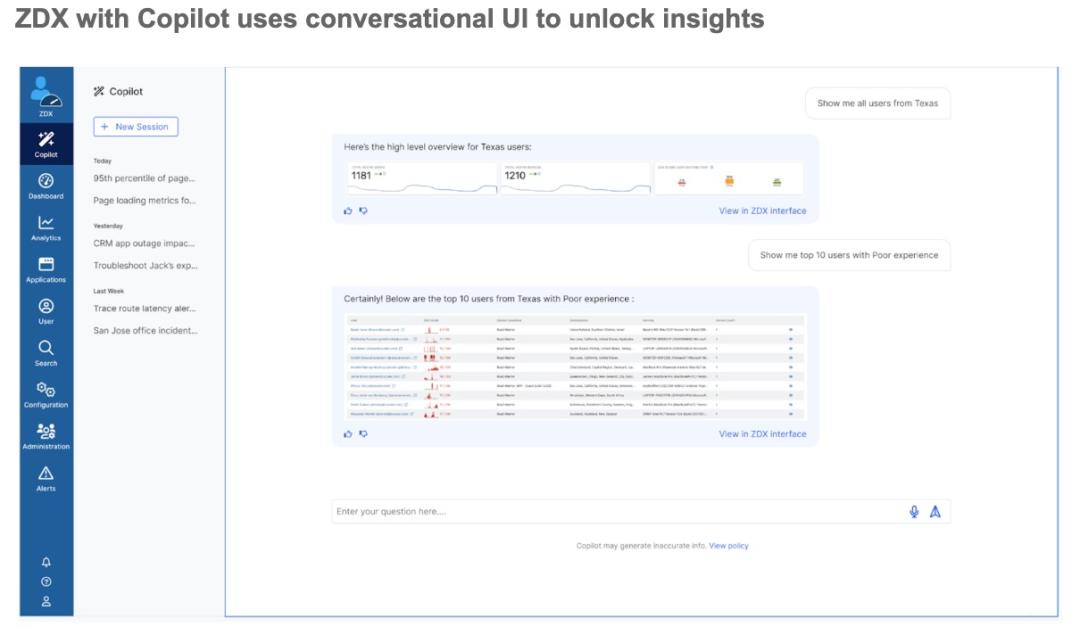
Recommended
